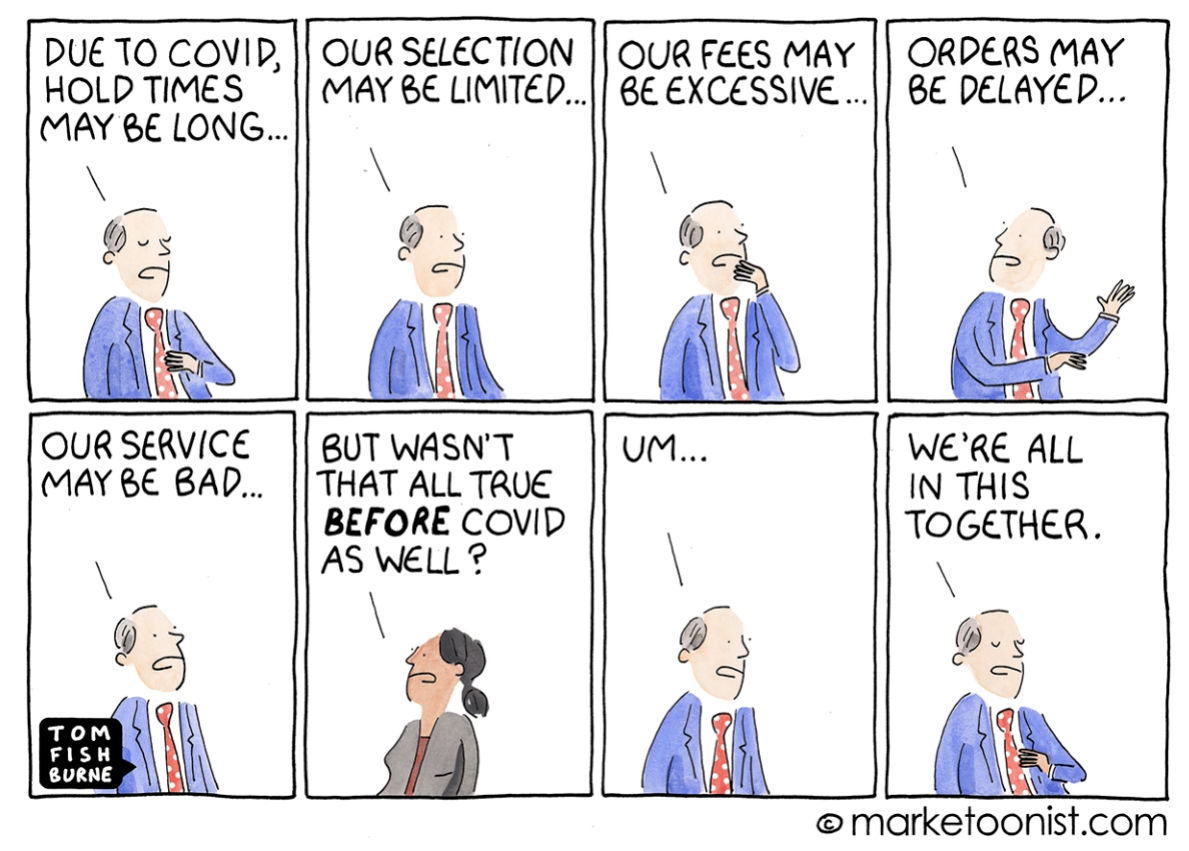In markets without much competition, organisations can deliver bad service not because of poor design and management, but simply because they can.

Benjamin P. Taylor shared a great thread on Twitter this week outlining the experience of attempting to get some housing support for an elderly relative.

I say ‘great thread’ when I really mean ‘depressingly accurate nightmare’. Unfortunately it represents a lot of people’s experience of accessing health/housing/social care.
Benjamin simply wanted to make an enquiry, to talk to someone, but is kept in a system designed to keep the user in a Moebius Loop of enquiry whilst they are assessed, processed and triaged. Anything to keep them away from the people they really need to talk to.
It does happen outside the public sector too. I’ve had a similar experience this week with an airline who emailed me to suggest I ‘try to speak to someone’ despite the fact I’d only emailed them out of desperation because I couldn’t find anyone who wanted to speak to me. I went on the ‘live chat’ to get help but was told the live chat was too busy and I should try phoning. The phone message said they were too busy and I should try the live chat, or send them an email.
This is what happens when cost-driven demand management decides how users must interact with the system. Humanity , and sheer common sense, have been designed out in the name of efficiency.
But what price efficiency?
Due to the nature of my work I’m routinely contacted by suppliers and vendors keen to get my view on their product. Many are great, but others talk of ‘putting you more in control of customer demand’, and of self-serve being the holy grail of customer service. Clearly people who’ve been to Nando’s and thought that was a desirable model for public service.
Back in the nineties call centres were designed to keep the customer away from who they actually wanted to speak to. It was never ever about customer service – just managing demand. Unfortunately – rather than seeing the call centre as an aberration, many organisations have decided to build out from it and enshrine it in digital form as part of a ‘transformation’.
Most ‘transformations’ are nothing of the sort, but simply a digital overlay on top of how business has always been done. The process that Benjamin describes is complex but can be made easy. People just don’t want to make it easy.
Many of our organisations — despite the rhetoric — have policies and procedures that are profoundly anti-customer. We have built checks, balances and verifications into our process because , deep down, we don’t actually trust the motivations of the public.
This is an uncomfortable truth — but goes some way to explain the difference in satisfaction levels between sectors. Customer service is often so bad precisely because it’s more efficient for the company.
In some rationed services – like health and housing – forcing customers to talk to a computer or chatbot, circulating them through phone menus or getting them to sit on hold “while serving other customers” serves a deterring role. People give up. This isn’t an accident, it’s by design. We are being purposefully shit – and excelling at it.
Earlier this week I spoke to a wonderfully helpful young woman trapped in the bureaucratic hell of the UK’s Best Loved Institution. When I asked if I could possibly change an appointment – even by two hours to help me out with a work commitment – she smiled and suggested I don’t try to change it. “First of all”, she said, “I don’t have authority to change anything. But if you try and change your appointment the system will just put you at the back of the queue and you’ll have to wait another month. I know, it’s stupid. We’ve all said that but they just won’t change it.”
Who are ‘they’? – and how can we make them accountable for shocking design that has real world consequences? As I discussed in the Outside Innovation podcast, it’s incredibly hard for individuals to change a system, but individuals can form a collective and challenge processes that are profoundly anti-customer and anti-employee.
Poor design will end when the public says it ends. When we name and shame and call things out publicly.
The pandemic has been an accelerant of most things. Any trend: social, business, or personal has locked on fast-forward. That includes customer dissatisfaction with poor service. As many companies have greatly expanded digital service options during the lockdowns the difference between those who did it well and those who have delivered a bodge job are there for all to see.
Customers won’t stay silent for long. They want contextualised interactions; seamless experience across channels; anytime, anywhere access to content and services and – guess what – the ability to speak to a human when they damn well want to.
Related: The People vs The System ... and Why The People Rarely Win


